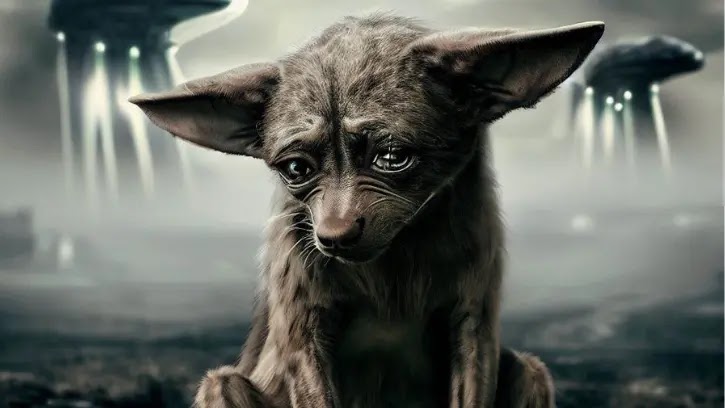Since its enigmatic appearance in Puerto Rico in 1995, the Chupacabras has captured the imagination of people around the world. This creature has been the subject of many debates, theories, and sightings, making it one of the most intriguing and captivating creatures in cryptozoology. In this piece, we delve into the origin and theories surrounding the Chupacabras, scrutinize the available evidence, examine the history of the Chupacabras viral phenomenon, and discuss some recent sightings of this cryptid.
What is the Chupacabras?
The Chupacabras is a perplexing creature that has been described as having the physical features of a reptile or bat-like animal. It has scaly skin and spikes on its back, and it is believed to attack domestic animals, particularly goats and sheep, and suck their blood, leaving them lifeless at the attack site. Sightings of the Chupacabras have been reported throughout Latin America and some locations in the United States. While the existence of the Chupacabras is still under debate, numerous theories exist regarding its origin and motivations.
Origins and Theories about the Chupacabras
The origin of the Chupacabras has been a subject of debate and speculation for years. Some experts believe that it is an extraterrestrial or supernatural creature, while others propose that it may be an unknown creature of terrestrial fauna. Another theory suggests that the Chupacabras could be the result of genetic experiments or natural mutations. Ultimately, the true explanation of the Chupacabras remains unknown.
Analysis of Evidence and Proof
Over the years, many pieces of evidence and proof have been presented to support the existence of the Chupacabras. However, many of these have been disproven or explained away conventionally. For instance, some Chupacabras sightings have been explained as attacks by wild animals or as hoaxes. Despite this, there are still many who believe in the existence of the Chupacabras and continue to seek more tangible evidence to support its existence.
History of the Chupacabras Viral Phenomenon
The Chupacabras became a viral phenomenon in the 1990s after it was first reported in Puerto Rico. Since then, sightings have been reported throughout Latin America and in some areas of the United States. The Chupacabras has also been featured in popular culture in movies, TV shows, and books. In recent years, public interest in the Chupacabras has waned, but there are still many enthusiasts who seek to unravel the mystery surrounding the creature's existence.
Recent Sightings of the Chupacabras
While interest in the Chupacabras has dwindled in recent years, some recent sightings of the creature have renewed curiosity about it. In 2019, a farmer in Argentina claimed to have found Chupacabras remains after one of his animals was attacked. Experts examined the remains, but the results were inconclusive in determining their origin. In 2020, there was a report of a Chupacabras sighting in Texas, USA. The witness described the creature as having a coyote-like appearance with unusual fur and a spiny back.
Conclusion
In conclusion, the Chupacabras remains an enigmatic and captivating creature in cryptozoology. While there is no conclusive evidence to support its existence, the mystery surrounding the creature continues to provoke debates, theories, and speculations about its origins and motivations. Recent sightings of the Chupacabras have reignited interest in the creature, and some believe that further research may provide more information about this elusive creature. However, for now, the truth behind the Chupacabras remains shrouded in mystery, leaving room for the imagination to run wild. Whether the Chupacabras is a product of folklore, a hoax, or a real-life cryptid, it has undoubtedly captured the fascination of many and will continue to be a topic of interest for years to come.
Amidst the mist and shadow's keep, A mystic beast doth softly creep, Its form unknown, its presence felt, In tales of lore forever dwelt.
''Amanda Dublin''



0 Comments